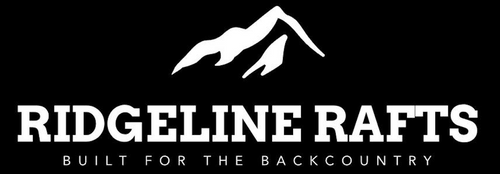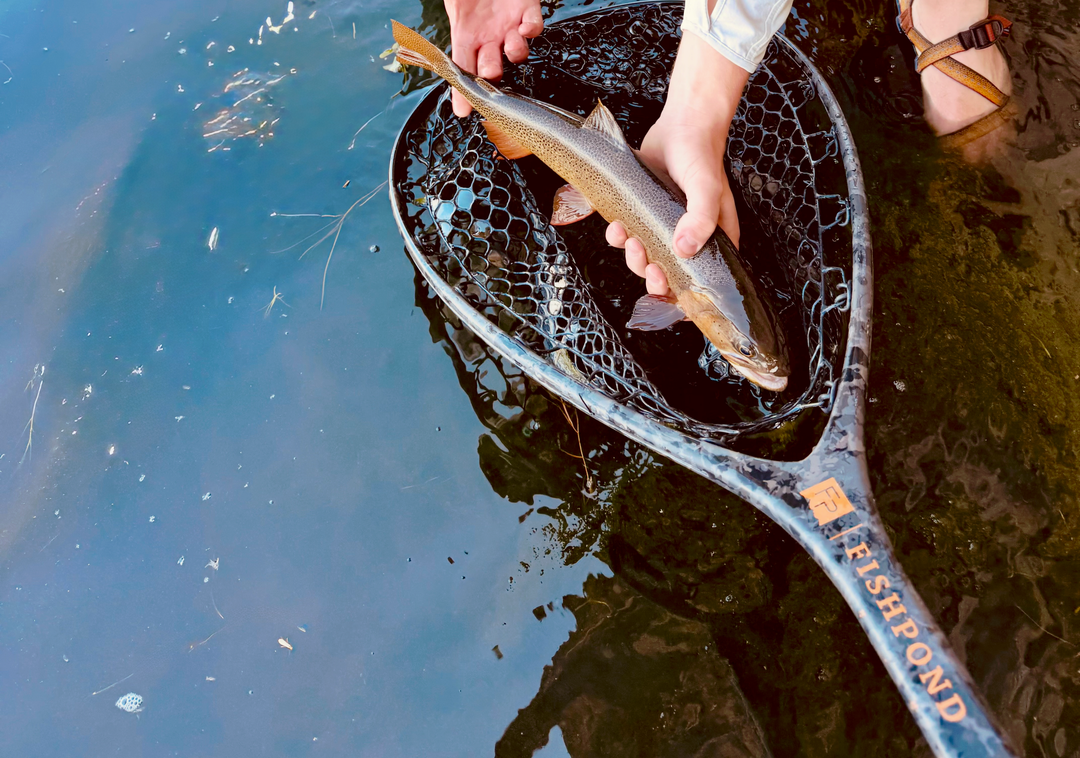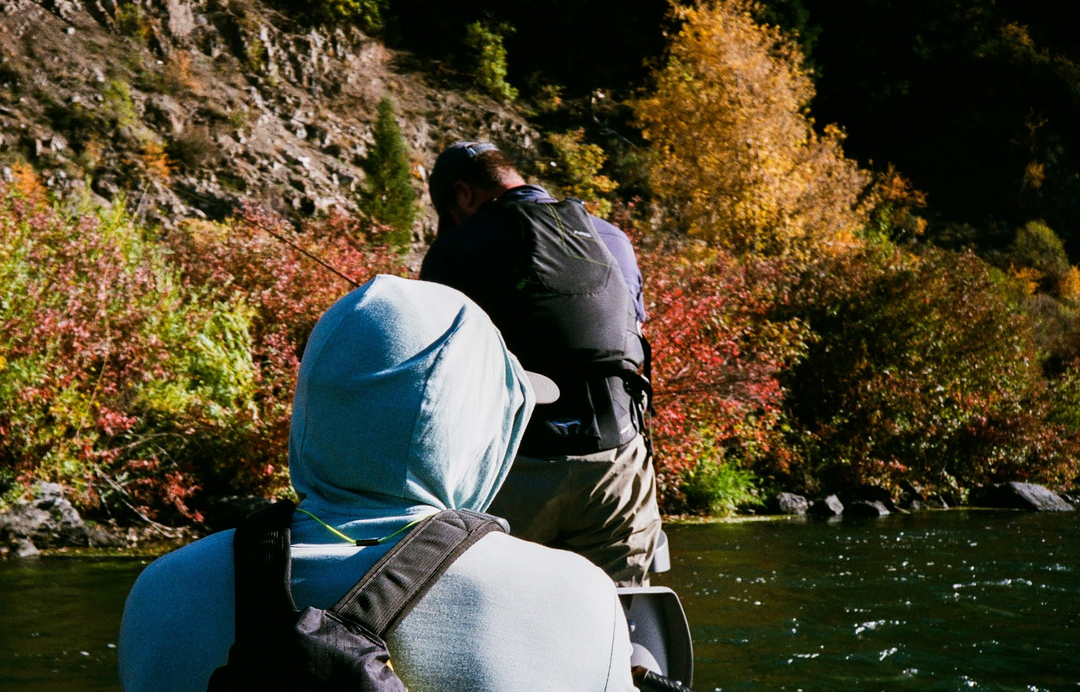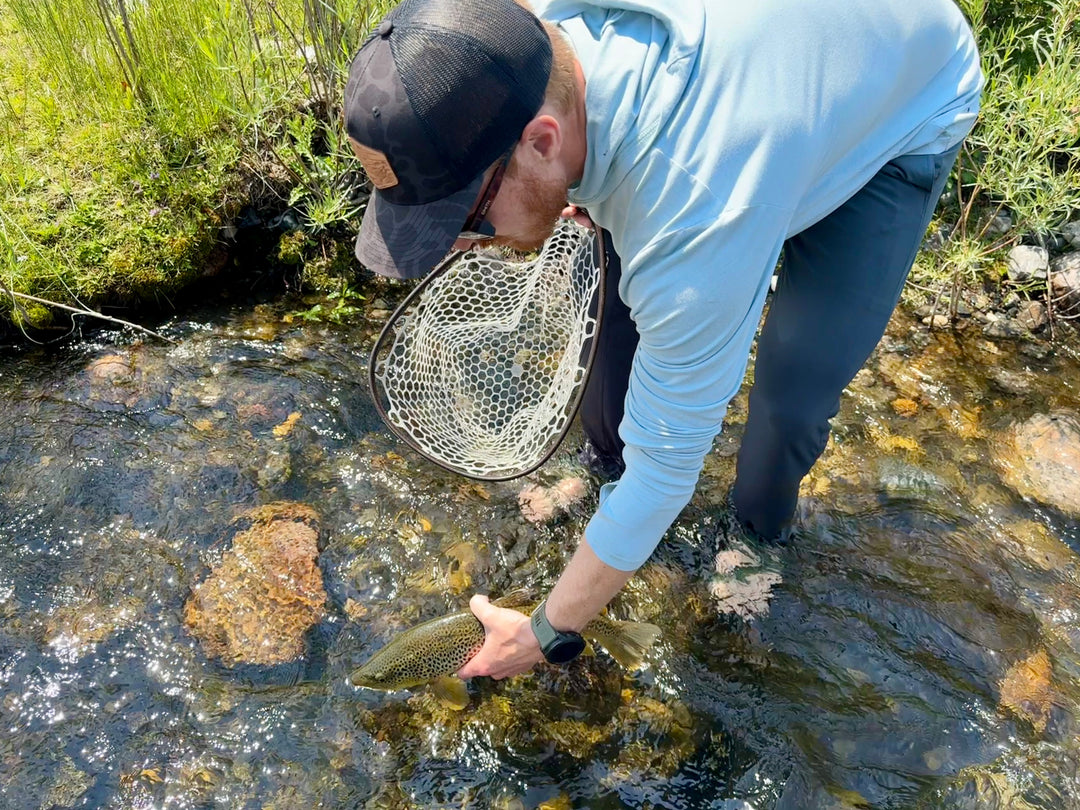Why Fishing From a Boat Makes You a Better Angler

Fishing from a boat (drift boat or an inflatable fishing boat) is hands-down one of the most fun, comfortable, and effective methods for fishermen. The smooth glide downriver, the comfort of a stable platform, and the access to water you could never reach from the bank—it’s no wonder so many anglers fall in love with it. But here’s something you might not expect: the more time you spend fishing from a boat, the better you become at fishing on foot.
It might seem like two entirely different worlds—walk-and-wade versus floating—but the skills, knowledge, and perspective you gain while drifting through a river directly transfer to your walk-and-wade game. From understanding fish behavior and water dynamics to improving your gear organization and casting technique, boat fishing teaches you things you simply don’t learn while standing knee-deep in a 200 yard stretch of stream.
Rafts and drift boats are purpose-built for this experience. They’re designed to track with the current, letting you present flies more naturally as you float downstream. They give you the ability to cover miles of river in a single day, explore untouched side channels, and fish every corner of a run—left, right, and center. With storage options galore gear organization becomes effortless, letting you focus on fishing instead of fumbling around for that one fly box you forgot you packed under your jacket. Additionally, the durable construction of these boats ensures they can withstand harsh conditions, enhancing both performance and user experience.
Whether you’re heading out solo, taking the family, or joining a guided float, the stability and comfort of a fishing from a boat let you dial in your fishing technique in all kinds of conditions. And that exposure—seeing how different fish respond in different water types, learning to read current and structure from a higher angle—builds the kind of instinct and confidence that carries over to any style of fishing.
This article is about making that connection—how the lessons learned from the boat can help you become a smarter, more effective walk-and-wade angler. From perspective and water reading to accessibility and exploring new water, we’re going to break down the specific ways floating can level up your fishing no matter where you’re standing.
Exploring New Water
Fishing from a boat doesn’t just help you catch more fish—it fundamentally changes how you see and interact with a river. From gaining a new vantage point to accessing untouched stretches of water, floating expands your understanding of what rivers offer and how fish behave within them. These lessons directly impact your success when you step back onto the bank to walk and wade. Professional fishing guides and recreational anglers in every state benefit from using boats that meet their specific needs, ensuring a reliable and enjoyable fishing experience.

Perspective
One of the biggest game-changers when fishing from a boat is the higher vantage point you gain. You’re elevated above the water, which gives you a more bird’s-eye view of the river. From this angle, you can spot subtle rises, identify fish-holding structure, and track feeding behavior in ways you simply can’t when you’re knee-deep and eye-level with the water.
Not only can you see further downstream, but you can also observe fish behavior more clearly—how they position themselves in relation to current seams, shadows, or structure. You’ll be surprised how often fish hold in water less than a foot deep. Floating just above them, I’ve drifted over big fish sitting right next to the bank—spots most anglers forget to check and unknowingly walk right through.
That experience shifts your awareness. When you go back to wading, you’ll think twice about splashing through that shallow run. You’ll approach water differently, with more precision and care, because now you know exactly where those fish like to sit.
Accessibility
Boats open up water that simply isn’t accessible by foot. Whether it’s floating over a private stretch (with permission) or navigating through sections too remote or rugged to walk to, the boat becomes a tool for exploration.
One rule my buddies and I have when we’re in an inflatable boat: Always take the side channel. Especially with high-floating rafts, you can sneak through skinny water that a drift boat wouldn’t even consider. Those little side channels? They’re goldmines. The fish there often haven’t seen a fly in weeks—or ever. So now when I’m wading, I’m constantly on the lookout for “side channel” opportunities scanning for those hidden gems most people walk past.
Even if you’re not in a boat, that mindset stays with you. The more willing you are to hike further, explore a lot more, and get away from the pressure, the more fish—and solitude—you’ll find.
Learn to Read and Fish a Diversity of River Systems
Boats don’t just move you faster—they expose you to far more types of water in a single float than most anglers would see in multiple walk-and-wade trips. This variety pushes you to learn how to approach each scenario and equips you to handle whatever the river throws your way—on or off the boat. Understanding rapid areas in the river can help identify where fish are likely to congregate, making it crucial for effective fishing.
Pocket Water
Pocket water—those small, fast-moving pockets behind rocks and boulders—becomes more approachable once you’ve rowed through it. You start to see where fish hide and how water moves around obstructions. You’ll learn that trout love spots where they can hold in slow water with fast food lanes nearby. Once you’ve felt that difference in current speed from behind the oars while rowing, it’s much easier to read and understand those micro currents while wading. Aquatic insects, or bugs, are often found in these specific areas of a stream and are crucial for attracting trout.
Riffles
Quick, shallow riffles are often overlooked when wading, but on a boat you float through dozens of them in a day. You start to notice the rhythm—how fish will tuck into softer seams and lie just behind the ripple line waiting for food. Fishing riffles from a boat trains you to fish them efficiently, make quick casts, and detect subtle takes. The anticipation and tense moments as you wait for the strike after making a cast create a vivid picture of excitement and focus during the fishing experience.
Slow and Glassy
Flat water can be the most technical—especially when it’s clear and slow. Boats give you access to long, still sections that demand stealth and precision. You learn to make soft presentations and minimize false casts, because spooky fish won’t tolerate mistakes. These experiences make you sharper when you’re back in wading zones with glassy runs.
Don't get stuck in a rut

Let’s be honest—many walk-and-wade anglers fall into the trap of fishing the same stretch over and over. It’s familiar. It’s easy. But that habit can stunt your growth. Boats help break that cycle by constantly exposing you to new water. You don’t get to cherry-pick the best hole and sit there for hours. You’re at the mercy of the river—you fish what comes next.
This kind of exposure challenges you to adapt on the fly (pun intended), and helps you build a broader, deeper skill set. You’re not just learning how to fish one spot—you’re learning how to approach and increase the odd of you pulling a trout out from any spot.
And here's something else to consider: you’ll often catch more fish from a boat simply because you’re hitting fresh water with lower pressure (and getting more natural drifts). More hookups mean more reps fighting fish—figuring out how they move, where they run, and how to land them efficiently. That practice matters. When you're on foot and you do hook into a good one, you’ll already have the experience and instincts to seal the deal.
Final Thought
Boats don’t just take you down the river—they take your understanding of the river to another level. You learn to see more, fish smarter, and adapt faster. And every one of those skills translates directly to walk-and-wade fishing.
The more rivers you float, the better you’ll wade.
Casting & Line Management
Fishing from a boat presents unique challenges that push your casting ability to the next level. You’re casting from a moving platform, often while dealing with changing angles, shifting distances, and unpredictable wind. These variables force you to make adjustments quickly and develop a more adaptable, accurate casting style. A boat that is easy to row can significantly enhance your overall fishing experience by providing better comfort and stability.
That skillset pays dividends when you return to walk-and-wade fishing. You’ll find yourself better equipped to place flies precisely, even in tricky conditions like tight quarters, overhanging branches, around rocks, or swirling currents.
This constant exposure builds adaptability and helps you become a better problem-solver. You learn how to approach spooky fish in clear water, how to deal with awkward drifts, and how to recognize what techniques won’t work before wasting time on them. Later, when you wade into similar conditions, you’re already familiar with the approach—you just need to fine-tune bug choice, depth, or presentation.
Fishing with a guide can accelerate this process, helping you navigate these tricky situations and build confidence faster!
Less False Casting = Better Results
One habit that fades quickly when fishing from a boat is excessive false casting. Spend any time on a popular river and you’ll see it—anglers with their flies in the air more than on the water. But flies don’t catch fish when they’re 10’ off the water and 30’ behind your head.
On a boat, you simply don’t have the luxury to make a dozen casts before delivering your fly. You learn to pick up and lay down your line with as few false casts as possible. This efficiency boosts your chances of hooking up and builds a habit of making your first cast your best cast—a mindset that carries over beautifully when you’re back on foot.

Targeting Fish with Precision
From a inflatable fishing boat or drift boat, you often have just seconds to spot a fish or a probable fish zone, calculate your cast, and deliver it with precision. That repetition—under pressure—hones your ability to read water and react quickly. When you’re wading, those instincts translate seamlessly. Whether you’re casting into structure, undercut banks, or a feeding lane in a riffle, you’ll have the confidence and muscle memory to do it well.
Better Drifts from a Different Angle
The elevated position in a boat gives you a better view of how currents affect your line. You can clearly see how drag forms in the belly of your fly line, and how that impacts your fly’s movement downstream.
Here’s a simple drill that drives this home: Anchor in clear water near a current seam. Let the belly of your fly line drag below your fly and watch how unnaturally fast your fly zips through the water. Then, mend the line properly and observe the difference. This visual imprint helps you internalize just how important good mending and slack control really are.
Learning from an Experienced Angler

Even if you aren’t in a place to buy your own boat you can still join in on a float with a more experienced Angler. Learning from an experienced angler is one of the best ways to improve your fishing skills and gain knowledge about the sport. An experienced angler can teach newcomers how to read the water, identify potential fishing spots, and choose the right gear and techniques for the specific type of fish and water. This hands-on learning is invaluable and can significantly shorten the learning curve for new anglers.
Guided fishing trips with an experienced angler can provide valuable insights and help anglers learn new techniques and strategies. These experts can also share their knowledge of the local market, helping newcomers find fishing spots, gear, and equipment. By learning from an experienced angler, newcomers can avoid common mistakes and quickly improve their fishing skills, making the experience more enjoyable and rewarding.
From Boat to Bank: Carrying Skills Forward
Fishing from a boat is more than just a convenient way to cover water—it’s a training ground for becoming a better angler overall. The skills, insights, and habits you develop while floating translate seamlessly to walk-and-wade fishing, making you more strategic, adaptable, and effective. So next time you’re wading a stream, remember: the lessons learned from the boat are always with you.




